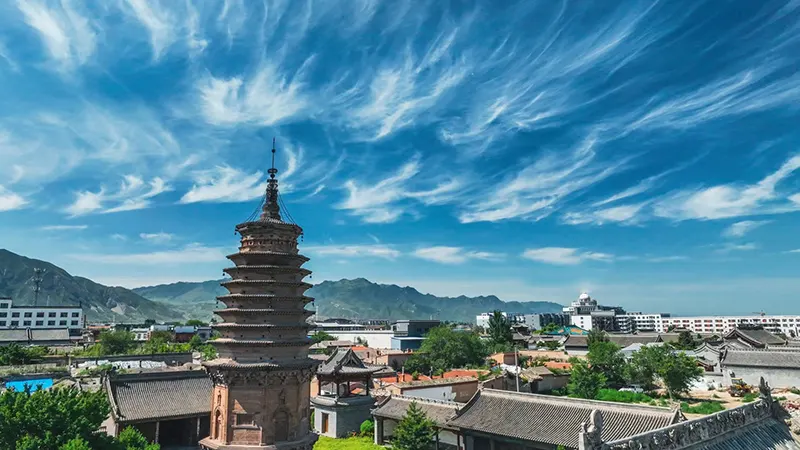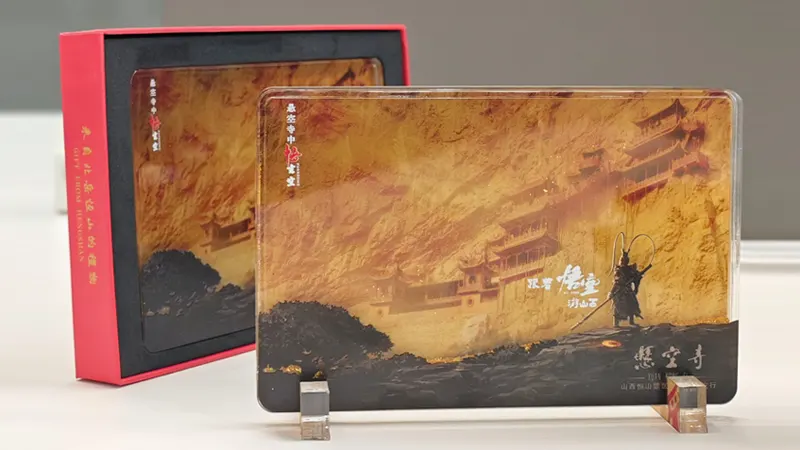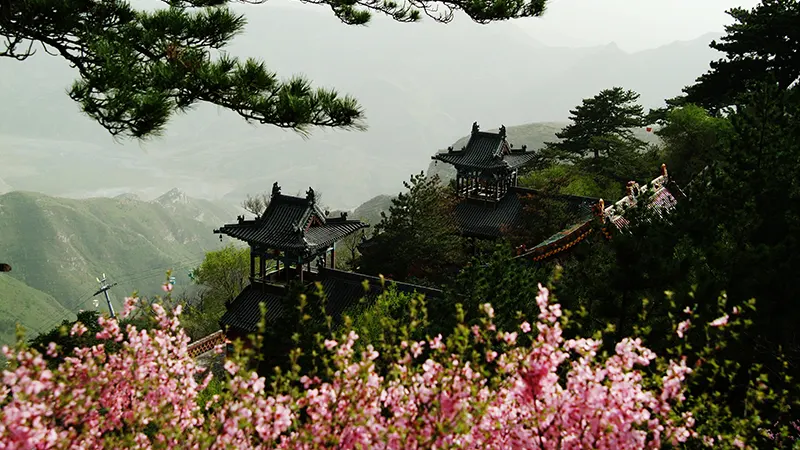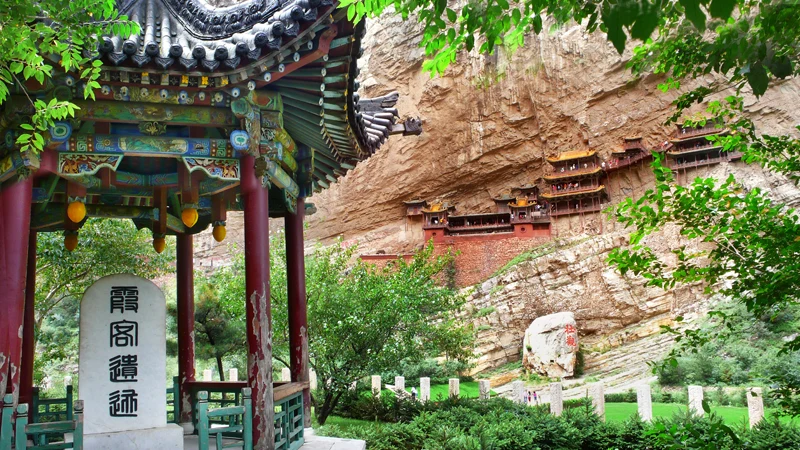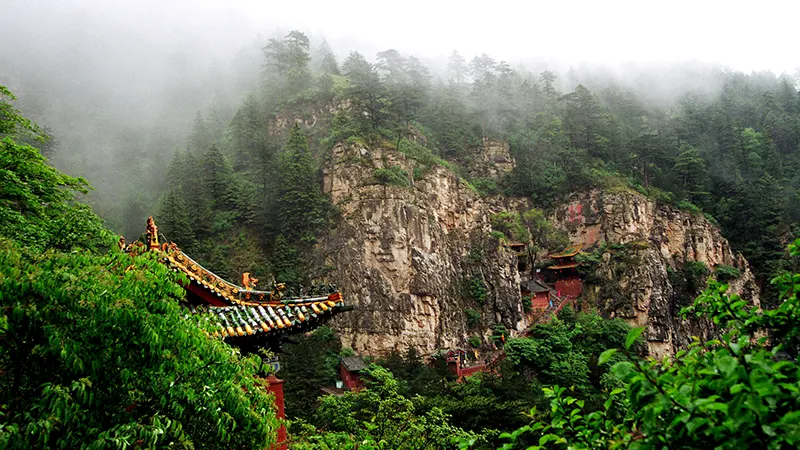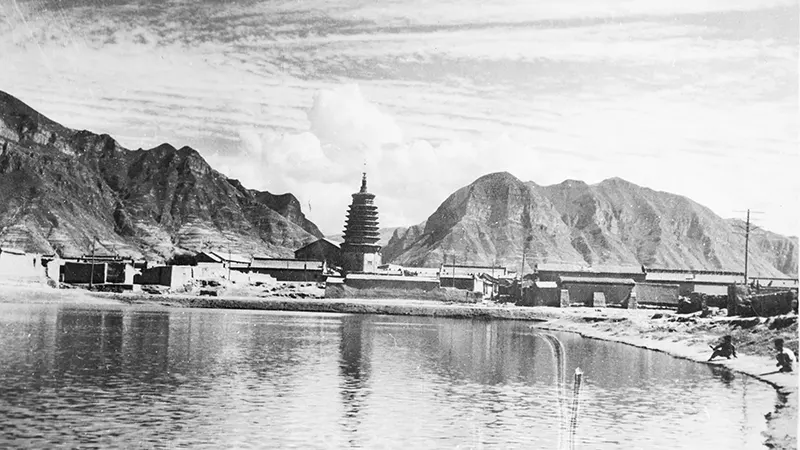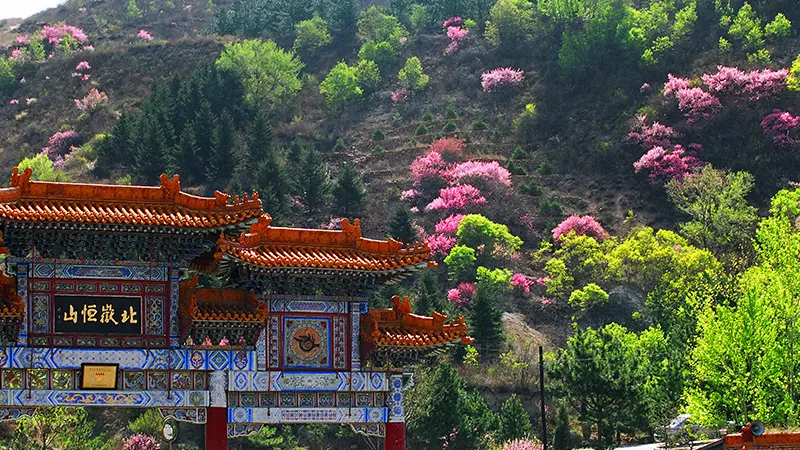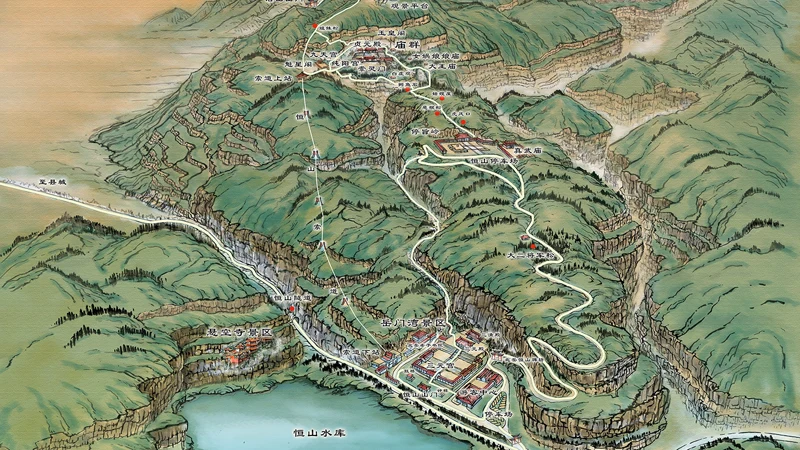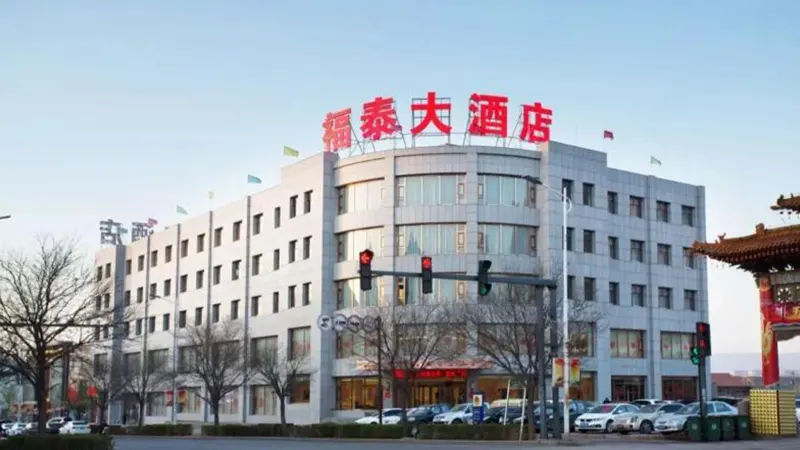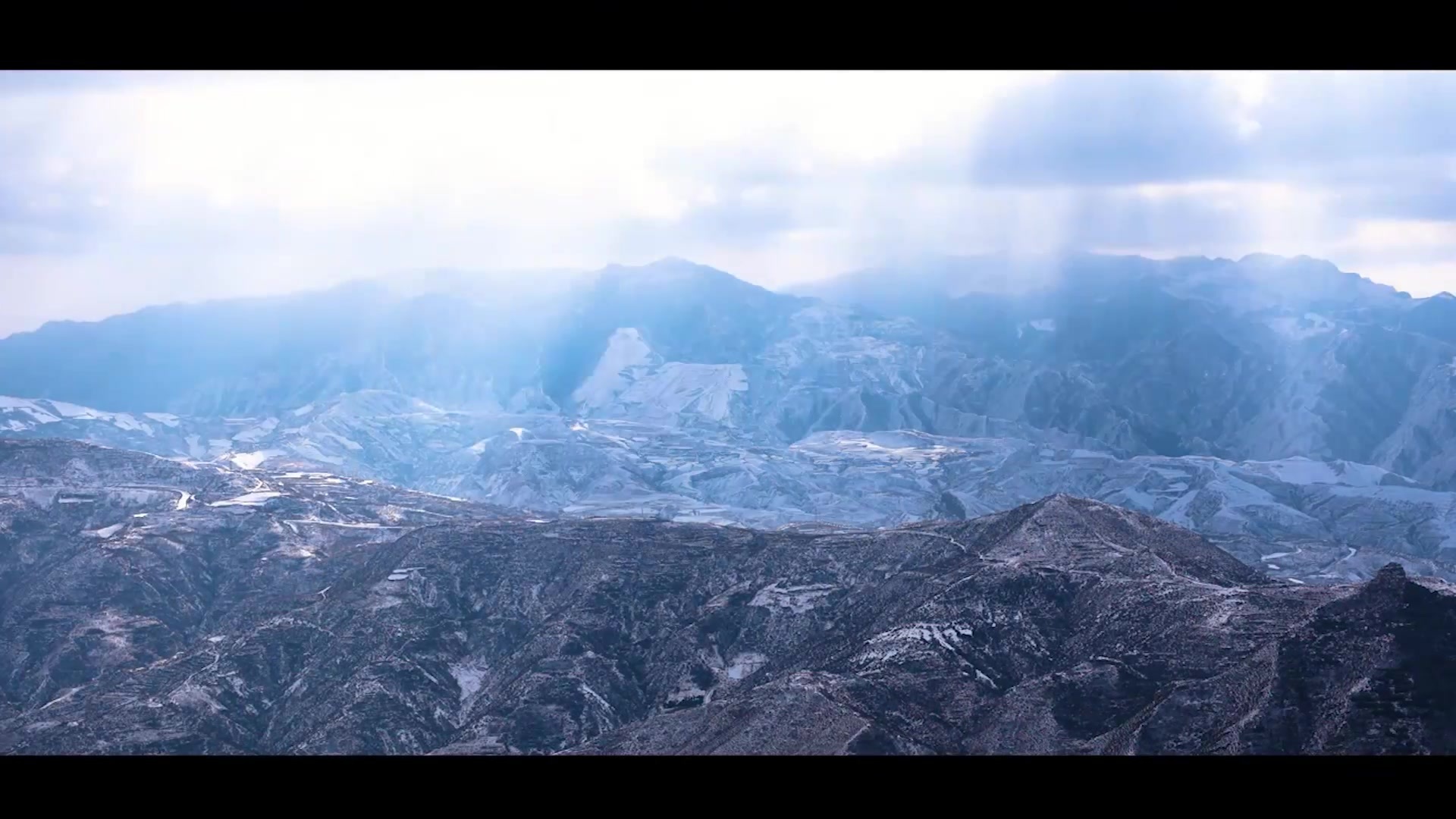Hengshan Mountain Fool | Three excellent traditional cultures understand the thickness of the North Mountain
Publish Time:
2025-04-10 20:31
Source:
Tourists visiting Hengshan Mountain, in addition to appreciating the magnificent natural landscape of Hengshan Mountain, are more interested in learning about the profound cultural heritage of the Northern Mountain.
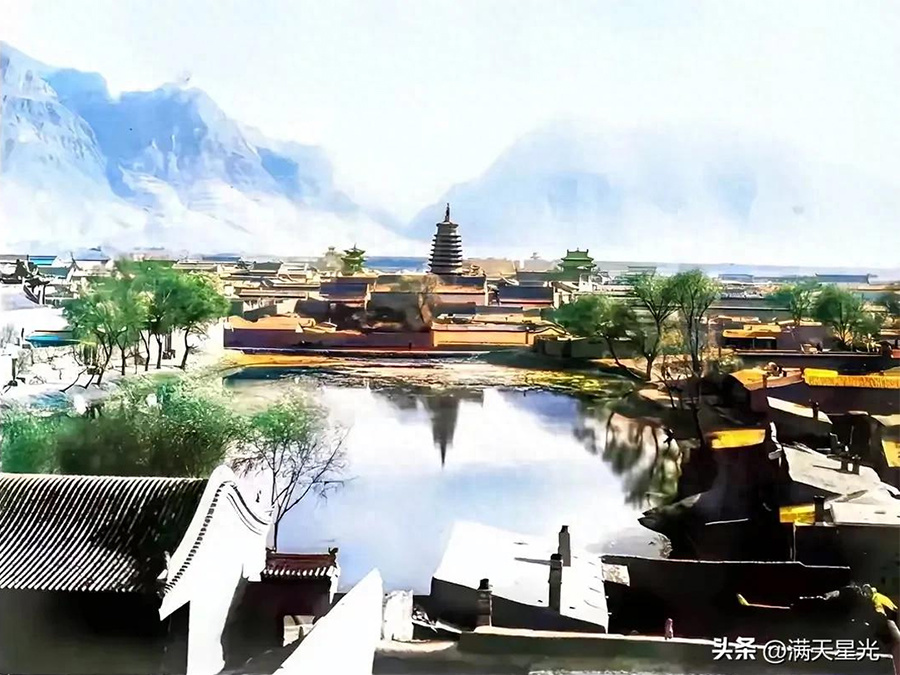
Yuánjué Sì Tǎ
Tourists visiting Hengshan Mountain, in addition to appreciating the magnificent natural landscape of Hengshan Mountain, are more interested in understanding the profound cultural heritage of Mount Heng. However, the culture of Mount Heng is vast and profound, rich in connotation. If one tries to grasp everything at once instead of focusing on the key points, it will be like a blind person touching an elephant – confusing and incomprehensible. Therefore, I would like to share my understanding of the culture of Mount Heng with everyone, hoping to inspire further discussion and serve as a guide for a glimpse into this rich heritage. I believe that the culture of Mount Heng can be understood by focusing on the following key points:
I. Mount Heng Sacrifice Culture
An ancient saying goes: “The most important matters of a nation lie in sacrifices and warfare” (Zuo Zhuan, Duke Cheng, year 13). Hunyuan Ancient City is located at the foot of Tianfengling, the main peak of Hengshan Mountain, which has been the national mountain for sacrificial rites by emperors throughout the dynasties. Zuo Zhuan, Duke Zhuang, year 22 records: “Famous mountains ascend to the heavens”, “Mountains and rivers are paired with the heavens”. In the minds of the ancients, the Five Great Mountains were considered sacred places connecting to heaven. As the Sons of Heaven, the emperors of ancient China would offer sacrifices to the Heavenly Emperor Taiyi, the Five Great Mountains, the Four Great Rivers, and the ancestors of the Huaxia people. The Zhou Guan records: “The Son of Heaven sacrifices to the famous mountains and great rivers of the world; the Five Great Mountains are equivalent to the Three Dukes, and the Four Great Rivers are equivalent to the feudal lords.” The Zhou Li clearly states that the Son of Heaven is only responsible for the sacrifices to the Five Great Mountains and Four Great Rivers; other famous mountains are sacrificed to by local feudal lords. The Five Great Mountains, as the most prominent among famous mountains, hold a far greater significance and stability in the political landscape of Huaxia compared to other mountains.
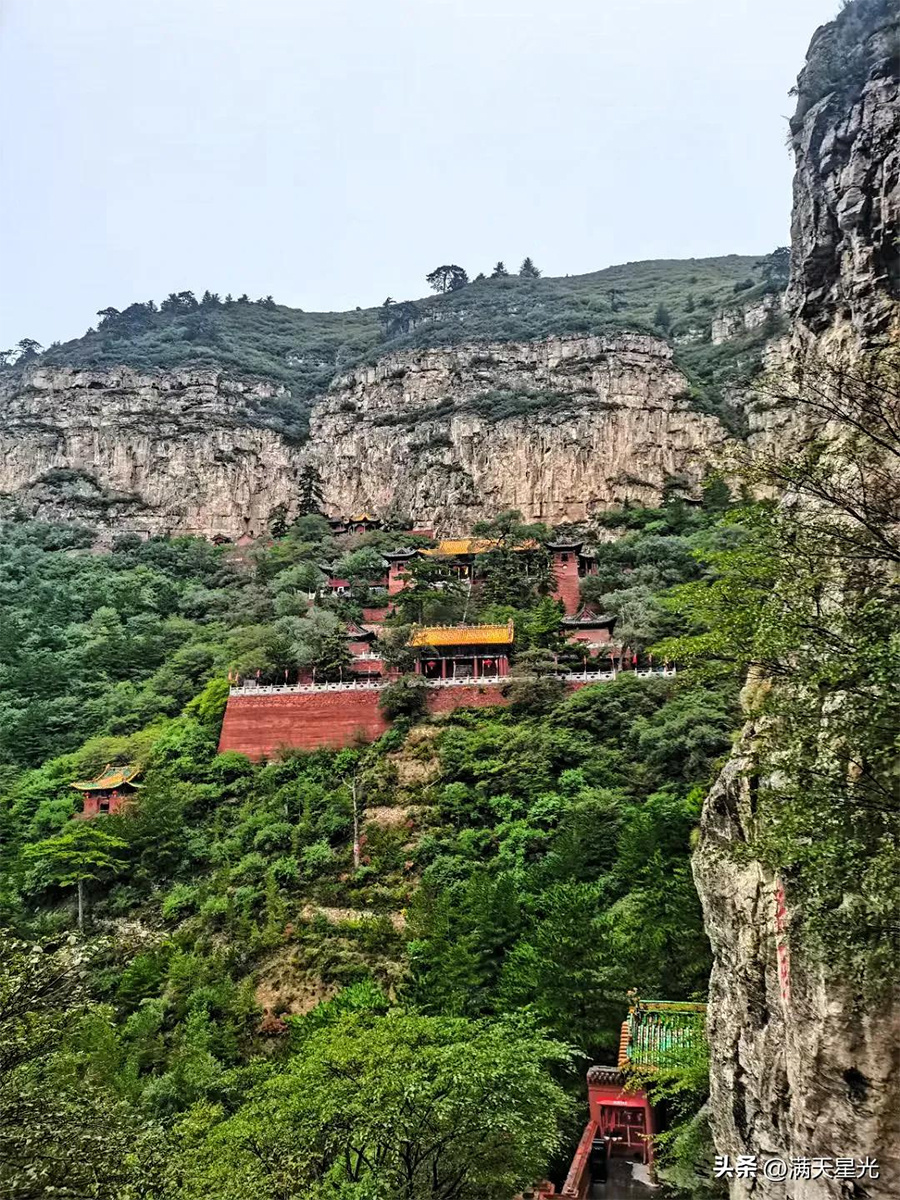
According to ancient legends, the concept of the Five Great Mountains was formed as early as the time of Emperor Shun. The Classic of Poetry writes: “Mount Song is the Great Mountain, soaring to the heavens”. The Shangshu, Emperor Dian records: “In the eleventh month of Shun’s reign, he conducted a hunting expedition to Mount Heng in the north.” The Records of the Grand Historian records: “In the eleventh month, a hunting expedition was conducted to Mount Heng in the north. Mount Heng in the north, is Hengshan. The rites were the same as those for Mount Tai…The present emperor performs the Feng and Chan ceremonies, and after twelve years he returns and visits all Five Great Mountains and Four Great Rivers.” The Book of Han records: In the third month of spring in the third year of Tian Han during the reign of Emperor Wu of the Han Dynasty (98 BC), after completing the Feng Chan ceremony at Mount Tai, he personally came to Hengshan Mountain to perform sacrificial rites, performing the ceremony of “burying the jade yuan”. This marked the first time that Hengshan Mountain was enshrined as a deity. In ancient mountain sacrifice rituals, after the completion of the sacrificial rites, jade was buried in a pit, which is called burying jade. “Burying jade and incense” is usually used to refer to the death of a beautiful woman. Among them, “burying” means burying, and “jade” and “incense” here generally refer to beautiful women. This idiom comes from Wu Wenying’s Yingtixu in the Southern Song Dynasty: “After parting, there is no news from Liubiao, things have passed, flowers have withered, burying jade and incense, how many times the wind and rain.” In addition, Gao Qi’s Ming Dynasty Listen to the song of the former prostitute Guo Fangqing’s disciple Chen has the expression “look back at the past joy, floating clouds change, burying jade and incense now several years”. The burial of flowers by Lin Daiyu in Dream of the Red Chamber also has this meaning, holding a memorial service for herself in advance. The ceremony of “burying the jade yuan” was one of the important activities of the imperial sacrifices to Hengshan Mountain.
The Book of Han, Records of Suburban Sacrifices records: “After Emperor Wu’s self-ennoblement at Mount Tai, after thirteen years he had visited all Five Great Mountains”. The Explaining of Characters records: “East Tai, South Huo, West Hua, North Heng, Central Tai Shi, places where the kings would conduct hunting expeditions.” The Book of Wei, Records of Rituals records: “On Xin Wei, he favored Dai, arriving at Yanguan, and offered sacrifices to Mount Heng in the distance. The following year, the emperor conducted a southern tour, passing through Shimen, and sent envoys to offer sacrifices to Mount Heng using jade bi and livestock.” The Book of Sui, Volume 7, Chapter 2 records: “Emperor Yang, during his visit to Jinyang, proceeded to offer sacrifices to Mount Heng.” There is a place called Tingzhi Ridge halfway up Hengshan Mountain, which was where imperial envoys would come to issue imperial edicts for sacrificial rites. A batch of Bronze ware was unearthed on the south slope of Liyu Village in Hunyuan County. Among them, the Xi Zun is a treasure of the Shanghai Museum. This batch of bronze ware is a set of ancient ritual objects used for national sacrificial rites. The Lǜ Lǚ Shéncí (Temple of the God of Musical Scales) in Hunyuan is the only temple in China dedicated to the god of music. It is also a building used for ancient sacrificial rites, as the use of musical instruments like the bianzhong replaced human sacrifices, marking a significant step towards civilization in the sacrificial practices of the Chinese nation. Numerous historical records show that emperors, as Sons of Heaven, considered regular sacrifices to Mount Heng as the highest form of respect to the Heavenly Emperor Taiyi. The tangible evidence of national sacrifices found in Hunyuan is truly unparalleled.

Fèngmíng Gé
Therefore, it can be said that: because of its connection to the heavens, it is full of spiritual energy; because of the sacrifices, there is Mount Heng. The mountain sacrifice culture is an older tradition than the three teachings of Buddhism, Taoism and Confucianism.
II. Mount Heng Military and Ethnic Integration Culture
Hengshan Mountain has always been a strategic location, its rugged terrain “able to break the spine of the world”. Hengshan Mountain is located at the gateway between the north and the central plains. Many familiar passes such as Pingxingguan and Yanguan are located here. Numerous emperors and famous generals have fought here. “During the Spring and Autumn period, the State of Dai relied on Hengshan Mountain to exist; during the Warring States period, Yan and Zhao relied on Hengshan Mountain to establish themselves; during the Han Dynasty, the Xiongnu utilized Hengshan Mountain to contend for the world; during the Eastern Jin Dynasty, the Murong clan dominated Hengshan Mountain; during the Northern Wei Dynasty, the Tuoba clan relied on Hengshan Mountain to divide the world; during the Song Dynasty, the Zhao family used Hengshan Mountain to defend the world; during the Jin Dynasty, the Jurchen people relied on Hengshan Mountain to control the world; during the Yuan Dynasty, the Mongols advanced southward from Hengshan Mountain to conquer the world; during the Ming Dynasty, Xu Da used Hengshan Mountain to secure the stability of the Ming Dynasty. The Qing dynasty unified the country, also relying on the natural dangers along the Great Wall, with Hengshan Mountain as its main component. If you are a drone enthusiast, when you control a drone to take pictures in Hunyuan, you will find that you can see sections of the Great Wall winding across Hengshan Mountain everywhere in Hunyuan County, castles that have weathered the ages, and beacon towers that are still standing strong despite the ravages of time…These bear witness to the ancient and mysterious nature of the land of Mount Heng and Hunyuan on the northern frontier, telling the story of Hunyuan’s extremely tortuous and rich frontier spirit, and also recording the historical traces of the fusion of nomadic and agricultural cultures. According to the research of Chen Yinke, a master of Chinese studies, Emperor Taizong Li Shimin had some Xianbei blood. Many experts say that “The Great Tang came from Hengshan Mountain and Datong”. The political and cultural landscape of the Great Tang was a product of the integration of the Han and Xianbei nationalities, which resulted in its inclusive nature and martial spirit, and created the grand scenes of the prosperous reign of Zhenguan and the prosperous reign of Kaiyuan, attracting numerous countries to pay tribute.

Hengshan Mountain Visitor Center
There are also two treasures of Hunyuan that can serve as witnesses to the military culture of Mount Heng: the first is the Shaoli Sword, and the second is the Yuan Dynasty armor.
Shàolǐ Jiàn It is a weapon from the later period of the Spring and Autumn period in the Jin state, unearthed in Liyu Village, Hunyuan County, Datong City, Shanxi Province, which is on the hillside west of the main peak of Hengshan Mountain. Three swords with the same name as the Shao Xu sword are known to exist. Li Bai, the immortal poet, wrote a poem, "Xia Ke Xing," the full text of which is as follows:"Jin Wu cast bronze soldiers, flames generate cold frost. Where Ji Zi hung his sword, princes all looked north. Five Hegemons emerged, seven powers rose, Zhan Lu faced Yu Chang, Tai A, who held it upside down? Ju Que fought wildly. Most furious was Long Yuan, Chi Xiao swiftly beheaded the snake. Gan Jiang, where are you now? Shao Xu alone shines brilliantly." Li Bai mentioned eight famous swords in this poem: Zhan Lu, Yu Chang, Tai A, Ju Que, Long Yuan, Chi Xiao, Gan Jiang, and Shao Xu. Whether it is a great prophecy by Li Bai or a coincidence of history, the fate of the first seven famous swords was unfortunately foretold by Li Bai's phrase "where are you now?", and their whereabouts remain unknown to this day, only "Shao Xu alone shines brilliantly."
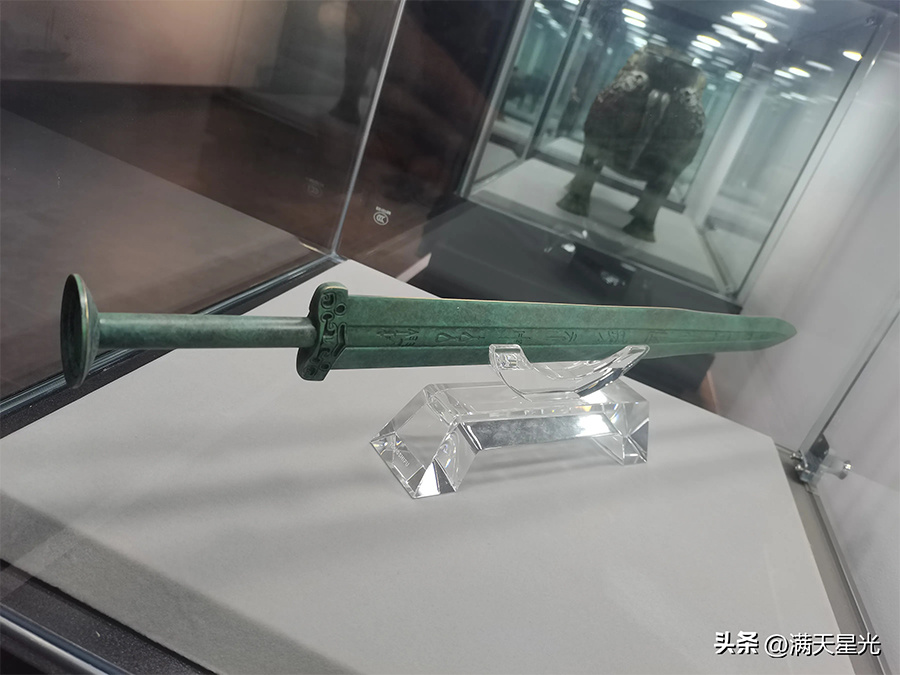
Shàolǐ Jiàn
The Shao Xu sword unearthed from Hengshan Mountain is now housed in the Beijing Palace Museum. The sword is 53.5 cm long, 5 cm wide, and weighs 0.88 kg. Its tip is broken, the spine is recessed between the two sides, the sides are wide and sloping, the front edge is narrow, the thick guard is in the shape of an inverted inverted V, the round stem has no ring, and the head is round. The sword guard is decorated with a beast face pattern inlaid with turquoise, the sword head is decorated with inlaid gold cloud patterns, and there is a 20-character inlaid gold inscription on the sword spine, 10 characters on each side: "Auspicious day Ren Wu, newly made for Yuan Yong, Xuan Liu Pu Lv. I name it, the stomach of Shao Xu." The inscription roughly means: On the auspicious day of Ren Wu, this useful sword was made, the material being a tin-copper alloy process, and the sword owner named it "Shao Xu."
Many scholars at home and abroad have conducted serious discussions on the meaning of "Xuan Liu." Since "Xuan Liu" appears on bronze objects, and bronze objects are alloys obtained by mixing copper, tin, and lead in certain proportions. Therefore, it is generally believed that "Xuan Liu" refers to a type of alloy material, such as lead and tin, which is essential for making bronze. "Pu Lv" means copper ingot. China's earliest monograph explaining word meanings, "Erya. Shi Gu," says: "Zhen, body also." In the pre-Qin era, "Zhen" was the first-person pronoun. Regardless of status or status, everyone could call themselves "Zhen." According to Sima Qian's "Records of the Grand Historian. Qin Shi Huang Ben Ji": After Qin Shi Huang unified the world, he stipulated: "The emperor calls himself Zhen." From then on, ordinary people could no longer call themselves "Zhen." Therefore, the word "Zhen" in the inscription does not necessarily mean that the Shao Xu sword is an imperial sword. Yan Shigu's annotation says "Xu, the name of a mythical beast", legend has it that Xu is a mythical beast with a deer head and a dragon body. In ancient culture, mythical beasts often have mysterious symbolic meanings. Xu may have been given auspicious and protective meanings, forming a cultural symbol and spiritual sustenance together with elements such as Zhong Xu bronze figures in palaces. "Shao Xu" is the newborn mythical beast; the sword owner should hope that he will be like the newborn Xu, be able to develop the spirit of "a newborn calf is not afraid of a tiger", be fearless and brave, and therefore named this sword Shao Xu sword.
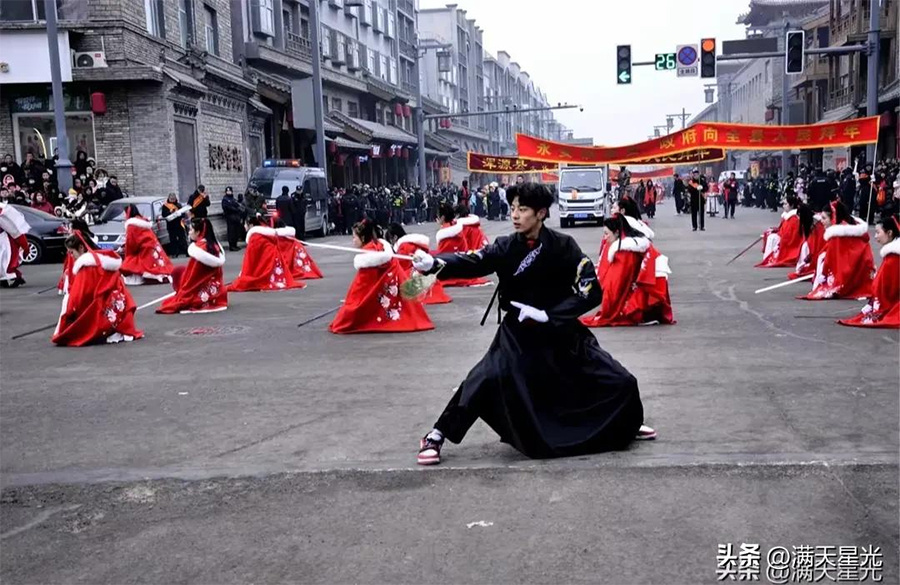
Hengshan Mountain sword dance performance
By observing the difference in color and oxidation between the spine and blade of the Shao Xu sword, it can be seen that the materials used in the two places are different. Analysis shows that although both are bronze made of copper-tin alloy, the spine has a higher copper content, while the blade has a higher tin content. This method of making swords using two different ratios of alloy materials may be related to the "composite gold" manufacturing process. By using different proportions of copper and tin, alloys with different properties can be obtained, making the sword both tough and sharp. The Shao Xu sword also uses the "cuo jin" (inlaid gold) decoration technique, which is an ancient metal fine work decoration technique that appeared during the Spring and Autumn and Warring States periods. Because it often uses gold and silver threads, it is also called gold and silver cuo or cuo jin yin. The usual practice is to embed gold, silver, or copper wires and sheets into the pre-made grooves on the surface of the bronze ware to form beautiful patterns or texts, and then use cuo shi (grindstone) to grind them flat. The inlaid gold inscription on the Shao Xu sword is included in the classification of inscriptions on bronze ware, and it has high calligraphy art value. The Shao Xu sword is the only bronze sword in China with its own sword name whose physical object can currently be seen, which is extremely precious. This type of sword mainly serves as a symbol of power, hence the Shao Xu sword is also known as the most well-known Chinese token. At the Hunyuan Ancient City History and Culture Exhibition Hall at the foot of Hengshan Mountain, a replica of the Shao Xu sword from the Palace Museum is on display, allowing visitors to get a glimpse of the dazzling appearance of this ancient famous sword that has traversed time and brushed away dust.
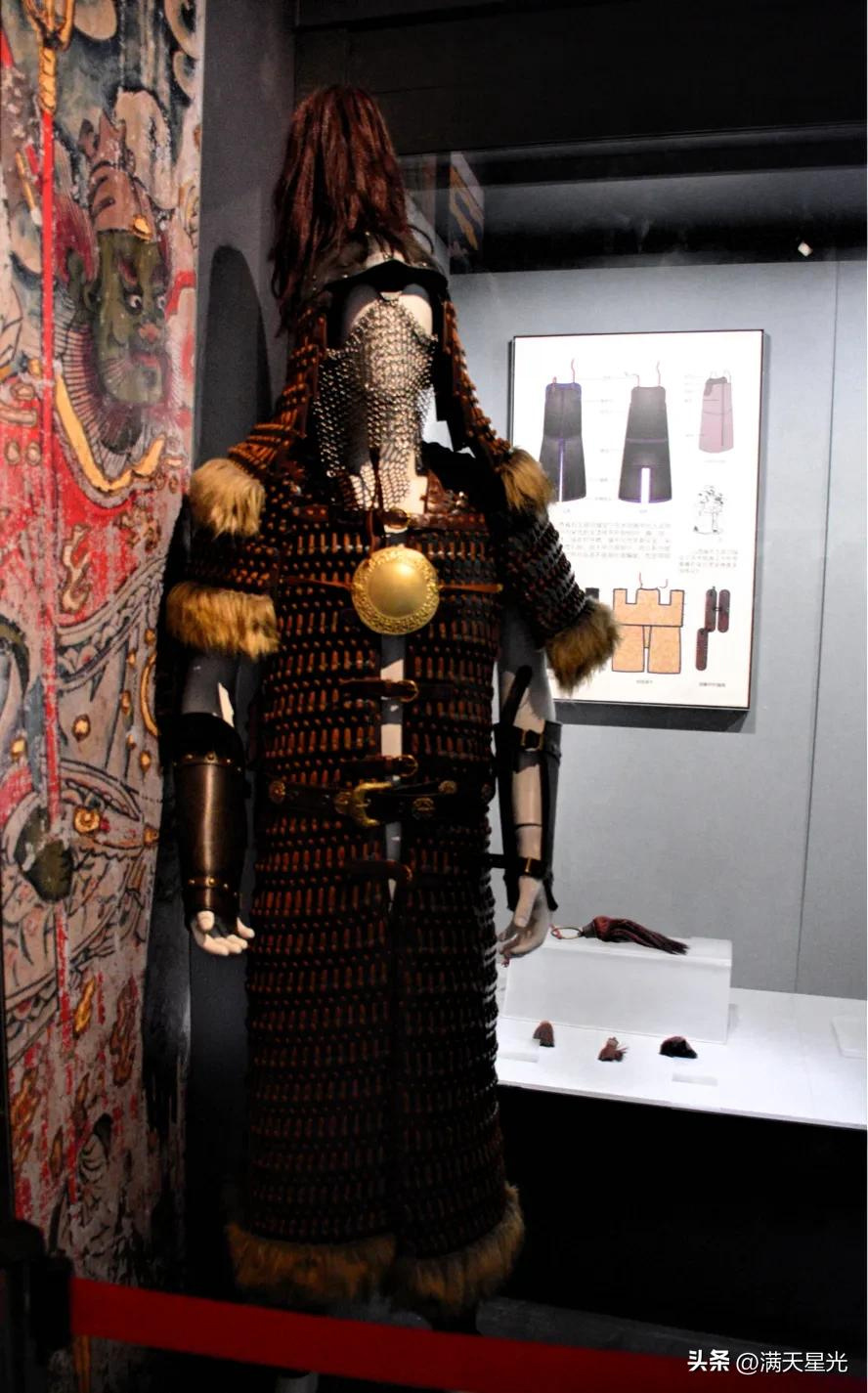
Yuan Dynasty armor exhibits at the Hunyuan History and Culture Exhibition Hall
Yuan Dynasty armor. In ancient China, armor and shields, as important defensive equipment, underwent a long process of development. From the leather manufacturing of the pre-Qin period to the appearance of iron armor in the late Warring States period, and then to the diversified development of the Tang and Song dynasties, the craftsmanship of armor making has been continuously improving. The Yuan Dynasty, as an important period in Chinese history, its military equipment was also influenced by previous dynasties, and on this basis, it innovated and developed. The Yuan Dynasty (1271-1368) was a dynasty established by the Mongols in Chinese history, with a strong military force, especially in cavalry. The armor of the Yuan Dynasty reflected the nomadic culture and military needs of the Mongols in design and function, and was also influenced by the Han people and other conquered ethnic groups. Yuan Dynasty armor was mainly made of metal, but other materials such as rattan and felt were also used. These materials need to be carefully processed to ensure the quality and strength of the armor. Mongolian armor usually has an irregular shape, which is different from the regular shape of Song Dynasty armor. This design may be related to the mobility and fighting style of Mongolian cavalry. The armor of the Yuan Dynasty improved and developed on the basis of inheriting the characteristics of previous dynasties and learning from the characteristics of Song Dynasty armor, combining the military needs of the Mongols. Its design considers both defense and flexibility and lightness to meet the requirements of cavalry warfare. The three generations of Hunyuan people Sun Wei, Sun Gongliang, and Sun Gong were the inventors of Yuan Dynasty armor. They once made armor for the Yuan Dynasty emperor and were named great craftsmen. According to historical records, when the Mongol army went south, Genghis Khan specifically issued an order that all captured craftsmen could not be killed and were placed in the craftsman camp for use. At that time, with the help of this order, the three generations of the Sun family saved the lives of many Han captives, accumulating great merit. The diversity and fine workmanship of Yuan Dynasty armor reflect the superb craftsmanship of the Hunyuan people at that time, as well as the integration of the nomadic and farming cultures.
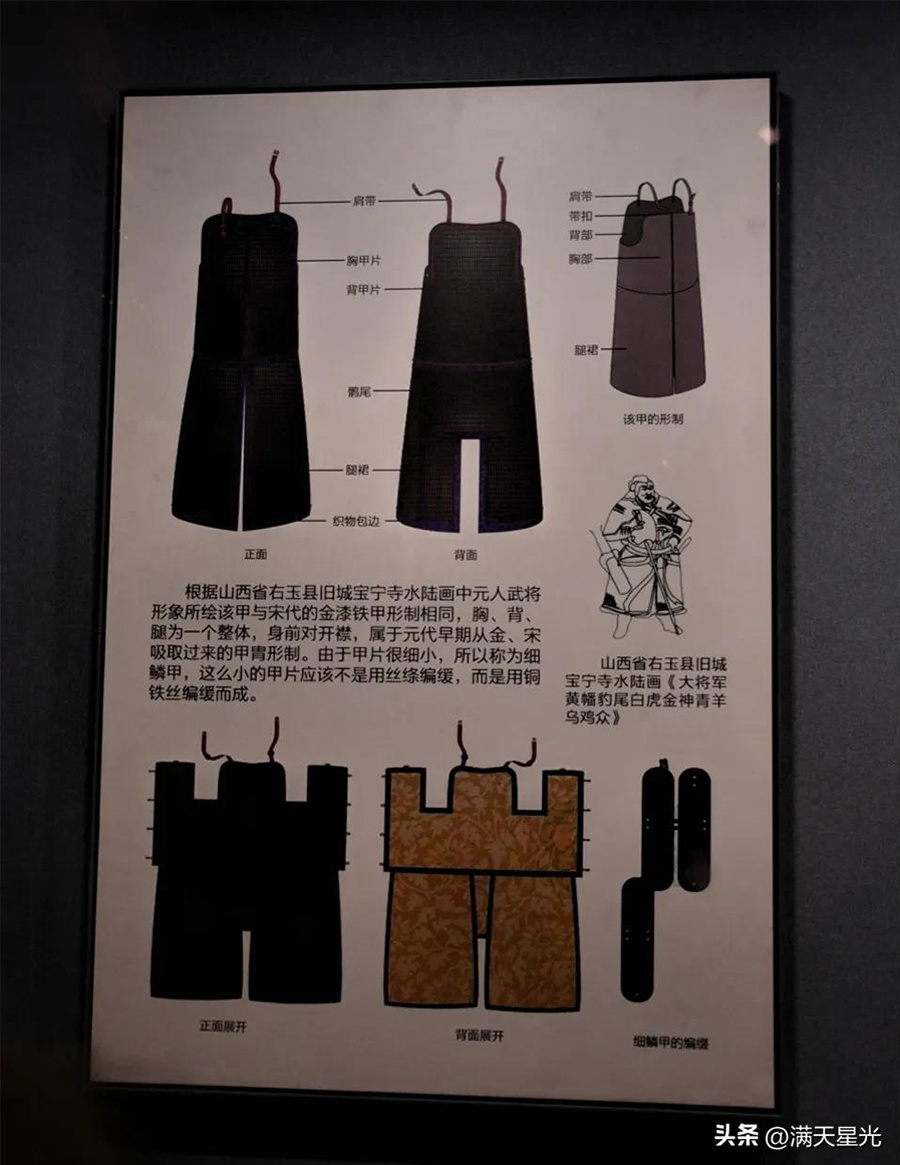
Detailed explanation of Yuan Dynasty armor
III. The religious integration culture of the three religions
Mount Hengshan is a place where Chinese culture is fully integrated, and a typical representative of the integration of Buddhist, Taoist, and Confucian cultures. Buddhist, Taoist, and Confucian cultures, abandoning confrontation and integrating their development, have formed the main vein and genes of excellent traditional Chinese culture. Mount Hengshan is the birthplace of the Quanzhen School of Taoism. Wang Chongyang, the founder of the Quanzhen School, advocated "the integration of the three religions", saying: "The Confucian gate, the Buddhist gate, and the Taoist path are interconnected; the three religions have always shared one ancestral wind." Mount Hengshan has a Hanging Temple, originally named Chongxu Temple, built on the sheer cliffs of the Golden Dragon Gorge between Tianfeng Ridge and Cuiping Peak, the main peaks of Mount Hengshan. It is a group of three-story vermilion buildings supported by 90 vertical pillars of varying lengths. It was first built in the later years of the Northern Wei Dynasty, more than 1500 years ago, in the 15th year of Taihe (491 AD), and has been rebuilt during the Tang, Song, Jin, Ming, and Qing dynasties. The Hanging Temple is one of the rare cliff-face ancient buildings in the world and is known as the "miraculous pavilion in the air" and the "No. 1 scenic spot of Mount Hengshan". It was also named one of the ten most illogical "dangerous" buildings in the world by Time magazine. Li Bai, the great Tang Dynasty poet, marveled at the Hanging Temple and composed the poem "Night Lodging in a Mountain Temple": "A dangerous building a hundred feet high, I could reach for the stars. I dare not speak loudly, lest I startle the people in heaven."
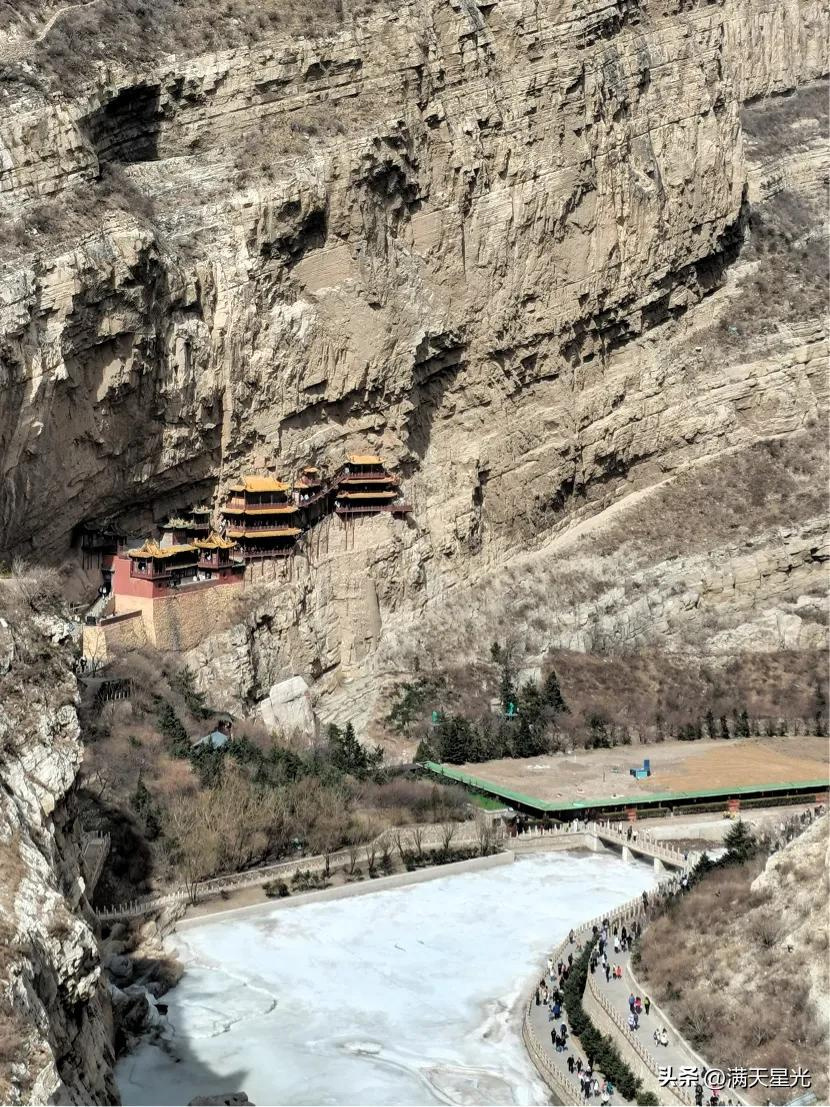
Hanging Temple
On the top floor of the Hanging Temple is a Three Religions Hall, where one can appreciate the cultural wonder of Wang Chongyang's advocacy of "the integration of the three religions". In the Three Religions Hall, Confucius, Sakyamuni, and Laozi, the three founders of the religions, are enshrined together. Buddhism emphasizes compassion, to save all beings; Confucianism advocates harmony and benevolence; Taoism takes emptiness as its root and follows the natural law. The three religions, while different, complement each other and treat each other equally, fully demonstrating the broad-mindedness and magnanimous demeanor of Chinese culture in its inclusiveness of various cultures. To this end, Xu Xiake, a geographer of the Ming Dynasty, called the Hanging Temple of Mount Hengshan "a magnificent view under heaven" in his "Travel Notes of Xu Xiake"; Lu Shoumings, a Qing Dynasty Jinshi and professor of Ningguo Mansion, praised it as "truly a great ingenious and unusual sight" in the "Continuation of Taiping Guangji"; and a Thai princess exclaimed it as "a Buddha's heart shown in the air". Besides the Hanging Temple, the phenomenon of the integration of the three religions on Mount Hengshan is ubiquitous, such as the Pure Yang Palace, the Guan Di Temple, the murals of Yong'an Temple, etc., all silently telling tourists the story of the integration of the three religions of the Chinese nation.
In addition, Mount Hengshan is also a famous Taoist mountain, a fairy cave, a national sacred mountain, and the first batch of national scenic spots announced by the State Council. Its magnificent natural scenery and profound cultural accumulation have attracted countless emperors, generals, celebrities, and literati to worship, describe, and sing its praises for thousands of years, thus leaving behind numerous exquisite poems, calligraphy, murals, inscriptions, dances, and other cultural and artistic treasures, making Mount Hengshan even more splendid and dazzling. Welcome everyone to Mount Hengshan to experience the culture and see China! (Editor: Tie Tie)
Keywords:
Hengshan
Related News




